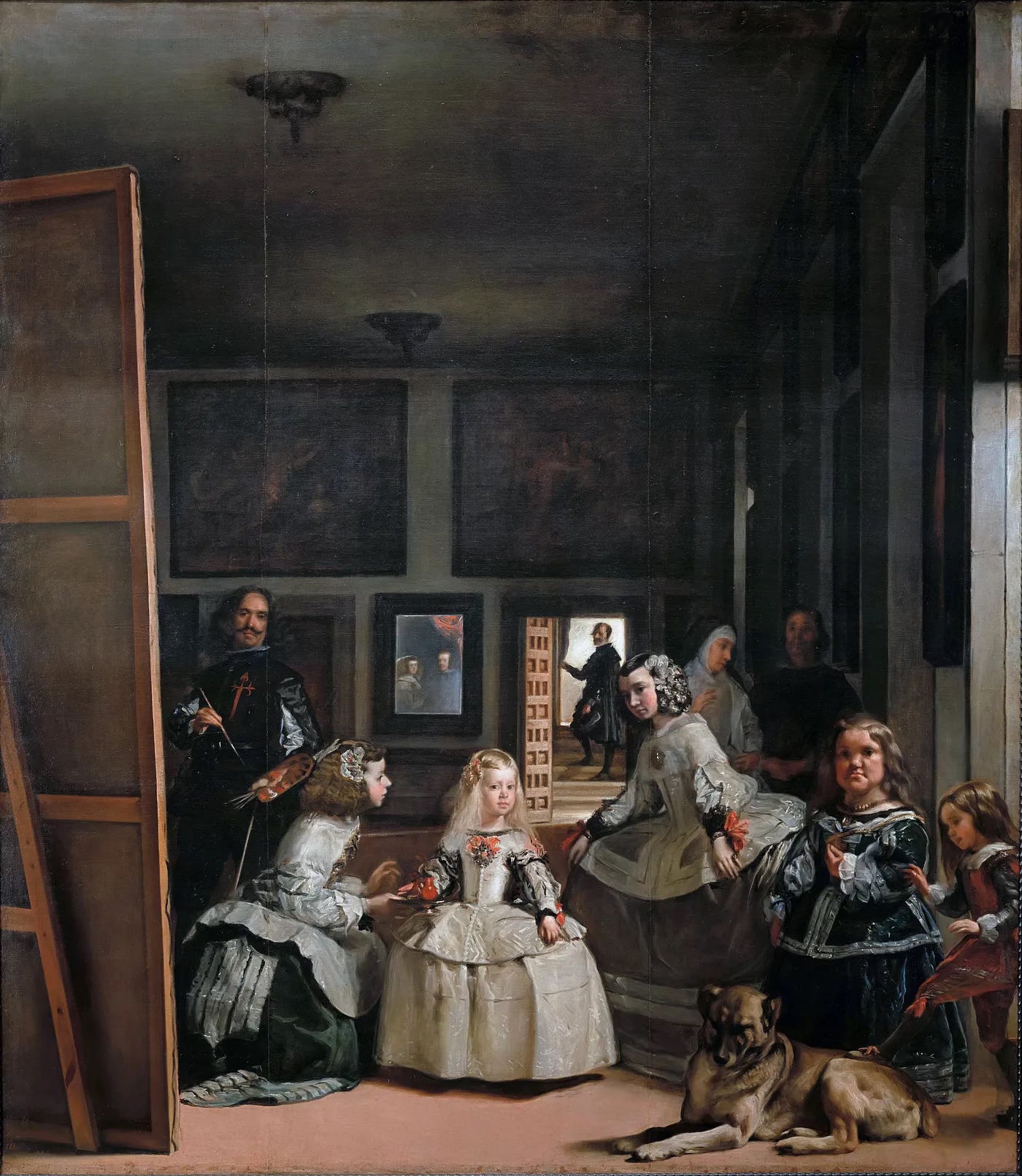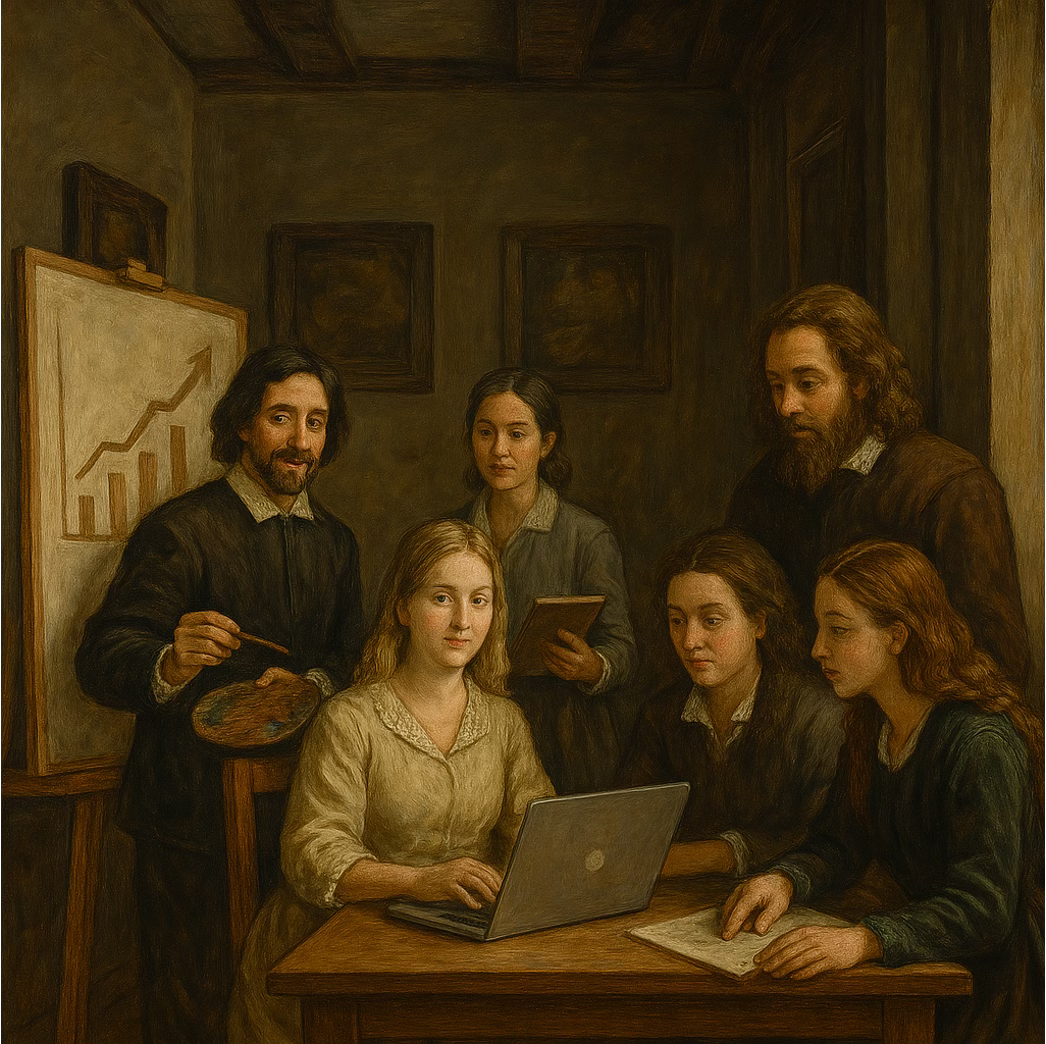Seeing Ourselves in the Frame: What ‘Las Meninas’ Teaches Us About Business
On presence, perception, and the art of leadership.

Las Meninas
Few paintings are as endlessly fascinating as Diego Velázquez’s Las Meninas. Painted in 1656, the work appears, on the surface, to be a moment captured in the Spanish royal court. But its brilliance lies in how it plays with perspective, presence, and ambiguity. Who is looking at whom? Who is being portrayed? What is real, and what is reflection? These are not just artistic questions. They are questions for anyone leading an organisation today and they are the subject of an article in Medium “The Mesmerising Painting That Every Art Lover Should See” by Christopher P Jones (requires Medium membership, but I have summarised the key points in this article).
This made me reflect. We often look at business through frameworks, models, or dashboards. But what if we looked at it more like Las Meninas invites us to look at a painting: with attention to ambiguity, awareness of perspective, and a healthy respect for what sits just outside the frame?
Leadership as Artist and Subject
One of the most intriguing aspects of Las Meninas is that Velázquez inserts himself into the painting. He is both creator and participant. He is painting a scene, and he is in the scene. This dual role is striking—and immediately familiar to anyone who has ever led a business or project.
Leaders, too, are both outside and inside.
We try to maintain perspective, to see the bigger picture. But we are also in the room: involved, visible, sometimes centre stage. Our choices shape the narrative, but so does how we choose to show up. We are never truly outside the system we lead.
This presents both a challenge and an invitation. It asks us to be conscious of how we show up in the frame. What are we signalling? Where do we place ourselves in relation to others? Do we stand in the light or the shadows? And are we painting the future—or being painted by the present?
Multiple Viewpoints, One Frame
Las Meninas draws power from its layered perspectives. Nearly every character is looking outward—but at whom? The viewer? The King and Queen, whose reflection we glimpse in the mirror? Or at Velázquez, the painter at work?
This complexity reminds us that organisations are full of shifting perspectives.
Each team, each function, each stakeholder sees the organisation slightly differently. There is no single viewpoint, only a shared frame.
Effective leadership involves making space for those perspectives.
Not collapsing them into one truth, but allowing them to exist in dialogue. Much like the painting, it’s not about clarity at first glance. It’s about depth over time.
In this way, the organisation becomes a living canvas—a shared scene where presence, attention, and interpretation all matter.
What the Mirror Reveals
One of the most talked-about features of Las Meninas is the mirror. It reflects the King and Queen, who do not appear directly in the painting. This mirror transforms the image—revealing those who are being observed, but also implying a presence behind the viewer.
In business, the mirror is reputation. It is culture. It is how others see the organisation, and how the organisation sees itself.
Often, we do not see ourselves directly. We see ourselves through reflection: in customer feedback, employee engagement, market response.
Just as no character in the painting looks at the mirror, businesses often ignore or downplay the signals that reflection offers. But mirrors, when read carefully, offer clarity. They show us who we really are—and what others experience when they look at us.
Open Doorways and Framed Portraits
Next to the mirror is an open doorway, light spilling in around a silhouetted figure. Two rectangles, side by side: one revealing something intangible and internal, the other opening out to something external and real.
That juxtaposition captures the dual work of leadership: to reflect deeply and to act outwardly.
To consider who we are, and also where we are going. The mirror is the past and present; the doorway, the future.
Too often, organisations focus only on one or the other. They either obsess over internal culture without connecting to external movement, or they chase the next market shift without understanding their own centre. True leadership walks the line between the two.
The Privilege and Risk of Being Seen
Velázquez painted himself into a world of nobility, placing art and artist alongside royalty. The red cross of the Order of Santiago, possibly added after he was knighted, becomes a bold statement: “I am not just a servant of the court. I belong here.”
There’s a lesson here, too, for those who lead.
Leadership is not a title; it is a visible act.
It requires stepping into the light, knowing you will be seen, interpreted, perhaps misunderstood. It means embracing the possibility that others will see more in you than you intended—and being open to what that reveals.
In an organisation, visibility is power. But it is also vulnerability. And leadership is the art of holding both with grace.
Final Thought: A Painting That Changes as You Do
Las Meninas remains mesmerising not because it tells a clear story, but because it invites endless interpretation. It reflects us back to ourselves. Every time we return to it, we see something new.
What if our organisations were like that? What if we built cultures, systems, and leadership practices that held space for ambiguity, dialogue, and presence?
What if we stopped asking for simple answers and instead trained ourselves to look more deeply—to notice what sits just off-centre, what the mirror shows, and who is standing in the light?
“Perhaps the real work of leadership is not to provide answers, but to pose the frame within which people can see themselves differently.”





I love this approach, Frank. Reminds me of Harvard's "artful thinking" to help teachers develop critical thinking skills in their students.